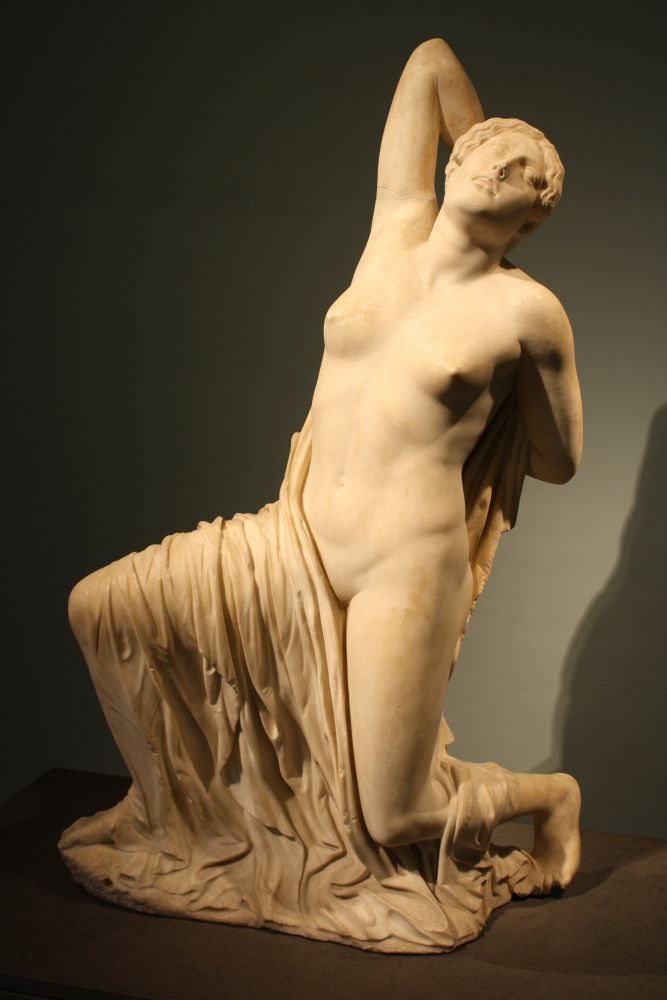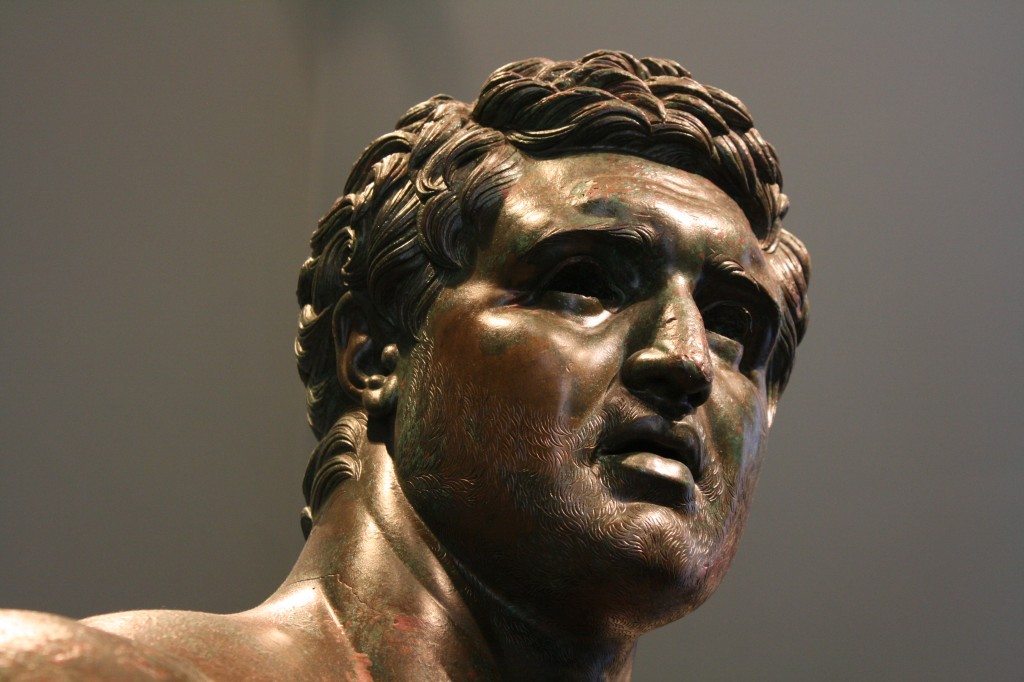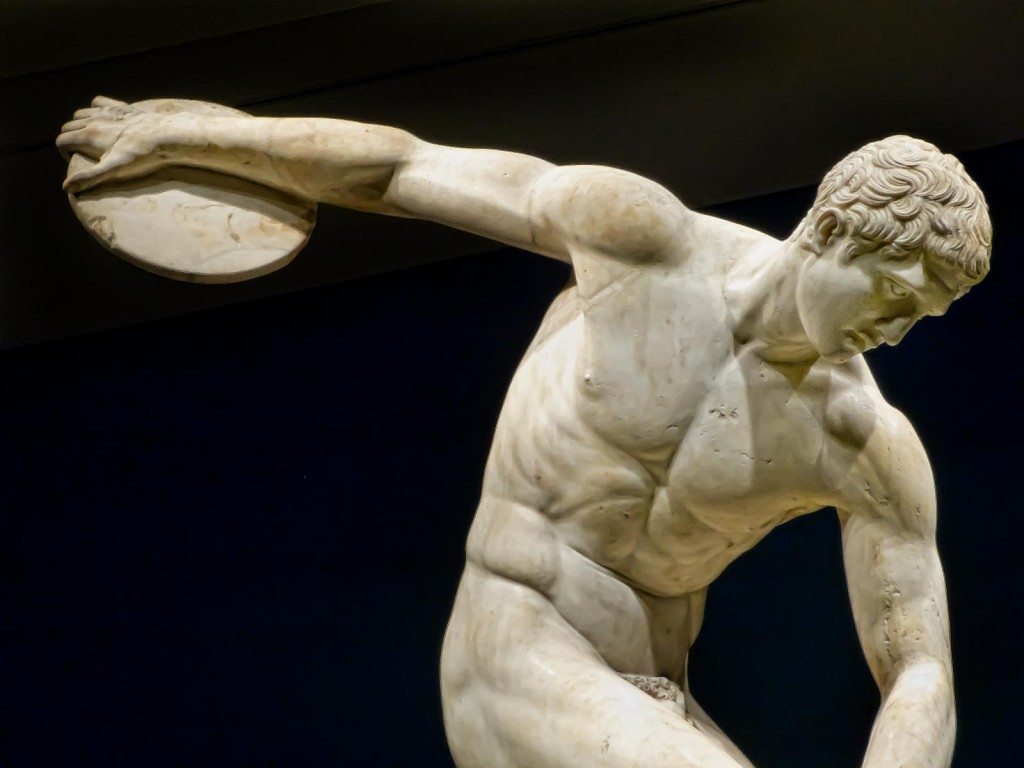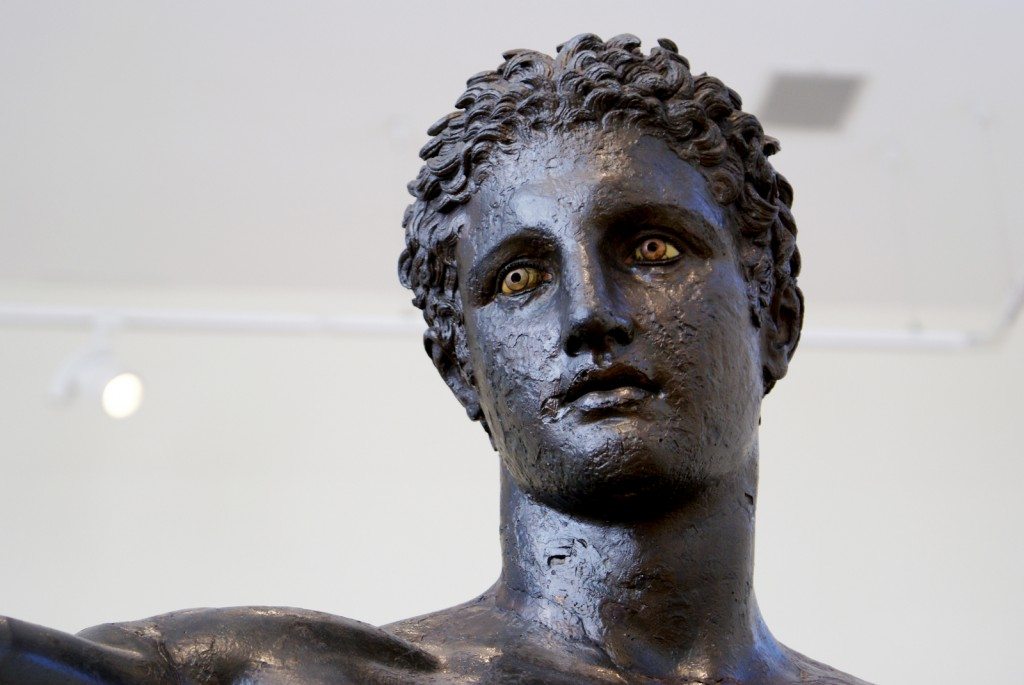Greek sculpture from 800 to 300 BCE took early inspiration from Egyptian and Near Eastern monumental art, and over centuries evolved into a uniquely Greek vision of the art form. Greek artists would reach a peak of artistic excellence which captured the human form in a way never before seen and which was much copied. Greek sculptors were particularly concerned with proportion, poise, and the idealised perfection of the human body, and their figures in stone and bronze have become some of the most recognisable pieces of art ever produced by any civilization.
They created life-size and life-like sculpture which glorified the human and especially nude male form. Even more was achieved than this though. Marble turned out to be a wonderful medium for rendering what all sculptors strive for: that is to make the piece seem carved from the inside rather than chiselled from the outside. Quite simply, the sculptures no longer seemed to be sculptures but were figures instilled with life and verve.
Crouching Aphrodite

This Crouching Aphrodite marble statue is a Roman variant of the 2nd century CE after a Hellenistic type. It depicts Aphrodite as bathing, crouching with her right knee close to the ground. (Louvre Museum). Photo by Carole Raddato, CC-BY-SA.
Boxer of Quirinal

The boxer of Quirinal, also known as the Terme Boxer, is a Hellenistic Greek sculpture dated around 330 B.C. of a sitting boxer with Caestus, a type of leather hand-wrap, in the collection of the National Museum of Rome. It is one of the two unrelated bronzes (the other being the unidentified Hellenistic Ruler) discovered on the slopes of the Quirinal within a month of each other in 1885, possibly from the remains of the Baths of Constantine. It appears that both had been carefully buried in antiquity. The statue is a masterpiece of Hellenistic athletic professionalism, with a top-heavy over-muscled torso and scarred face, cauliflower ears, broken nose, and a mouth suggesting broken teeth. Photo by Irene Fanizzia, Copyright.
Dying Niobid

A 5th century BCE marble sculpture of one of the daughters of Niobe, dying from an arrow wound in her back. According to the story from Greek mythology Niobe insulted the goddess Lato by thinking herself more worthy. Lato then had her children Apollo and Artemis strike down Niobe’s children with their deadly arrows. (Palazzo Massimo, Rome). Photo by Mark Cartwright, CC-BY-NC-SA.
The Hellenistic Prince

The head of the 2nd century BCE bronze statue known as ‘The Hellenistic Prince’. The statue perhaps represents Attalus II, king of Pergamon. The head may also be a portrait of an unknown wealthy Roman, eager to appear as a Hellenistic prince. The work is influenced by the 4th century BCE sculpture of Lysippus and is one of the very rare examples of bronze Hellenistic sculpture. (Palazzo Massimo, Rome). Photo by Mark Cartwright, CC-BY-NC-SA.
The Diskobolos

The Diskobolos or Discus Thrower, 2nd century CE. Roman copy of a 450-440 BCE Greek bronze by Myron recovered from Emperor Hadrian’s Villa in Tivoli, Italy. (British Museum, London). Photo by Mary Harrsch, CC-BY-NC-SA.
Antikythera Ethebe

Known as the Antikythera Ethebe, the statue is one of the very few surviving ancient Greek bronzes and is a masterpiece of Greek Classical sculpture (c. 340 BCE) The statue may represent either Hercules holding the apples of the Hesperides or Perseus holding the head of the Gorgon Medusa. (National Archaeological Museum, Athens). Photo by Dimitris Agelakis, CC-BY-NC-SA.
Venus of Milo

So-called “Venus de Milo” (Aphrodite from Melos). Parian marble, ca. 130-100 BCE. Found in Melos in 1820 CE. On display at the Louvre, Paris. Photo by Jastrow, Public Domain.
Text from the Ancient History Encyclopedia definition of Greek Sculpture by Mark Cartwright. Photos are attributed in their caption.
